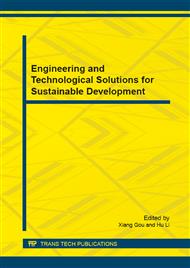p.211
p.218
p.222
p.227
p.231
p.237
p.242
p.247
p.251
Analysis for Cascade Recycling of LNG Cold Energy
Abstract:
Considerable cold energy embodied in liquefied natural gas (LNG) can be recycled in LNG regasification, which can not only save energy but also avoid cold pollution within the low-temperature fluid emission. Review on both domestic and overseas is conducted on the recycling of LNG cold energy in different applications. Against the single purpose utilization of LNG cold energy with a large amount of energy loss, the cascade recycling strategy is proposed for highly-efficient utilization of LNG cold energy. Based on the defined cold exergy efficiency, the exergy analysis is performed for some different recycling applications of LNG cold energy. The system exergy rate method is used to compare the superiority of modes in which the LNG is converted into NG under normal temperature. The results show that the exergy efficiency of a LNG cold energy cascade recycling system is higher than that of a single utilization system. Apart from the improved efficiency, the cascade recycling strategy can expand the applicable temperature range of LNG cold energy compared with the single utilization. Finally, the entropy and entransy for evaluating the LNG cold energy transport process are compared and discussed, from which it is indicated that entransy is more appropriate for the heat transfer process with low-temperature or large temperature difference, as is the case for LNG cold energy recycling.
Info:
Periodical:
Pages:
231-236
Citation:
Online since:
November 2014
Authors:
Price:
Сopyright:
© 2014 Trans Tech Publications Ltd. All Rights Reserved
Share:
Citation:


